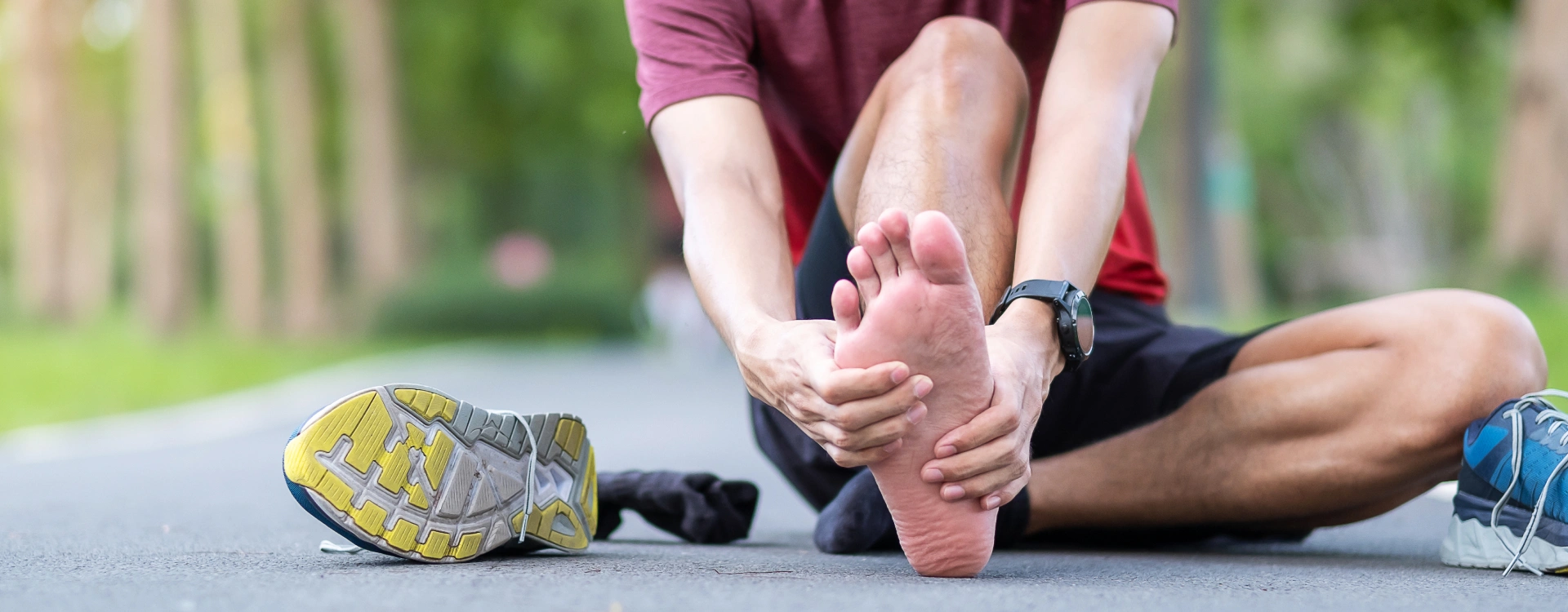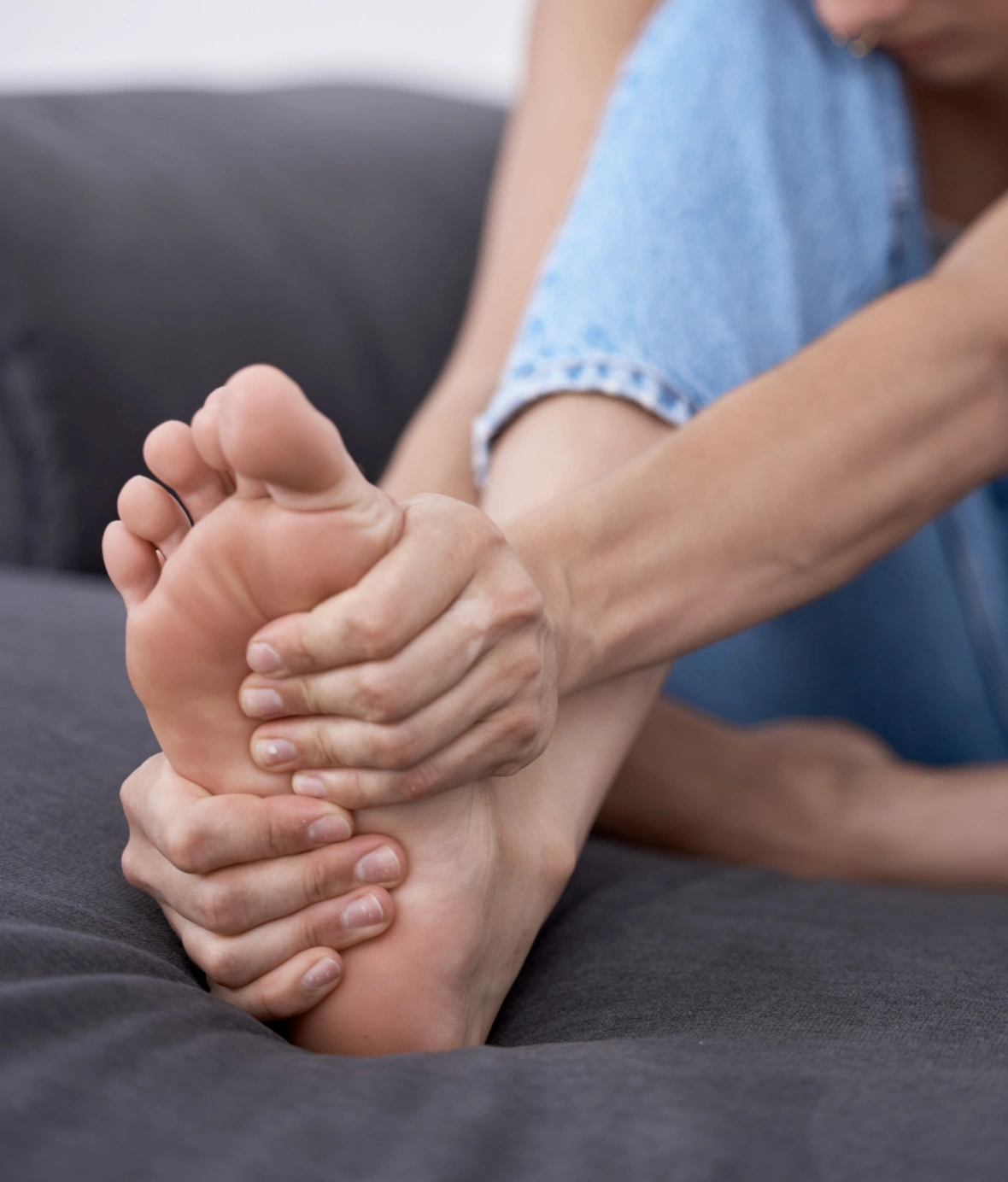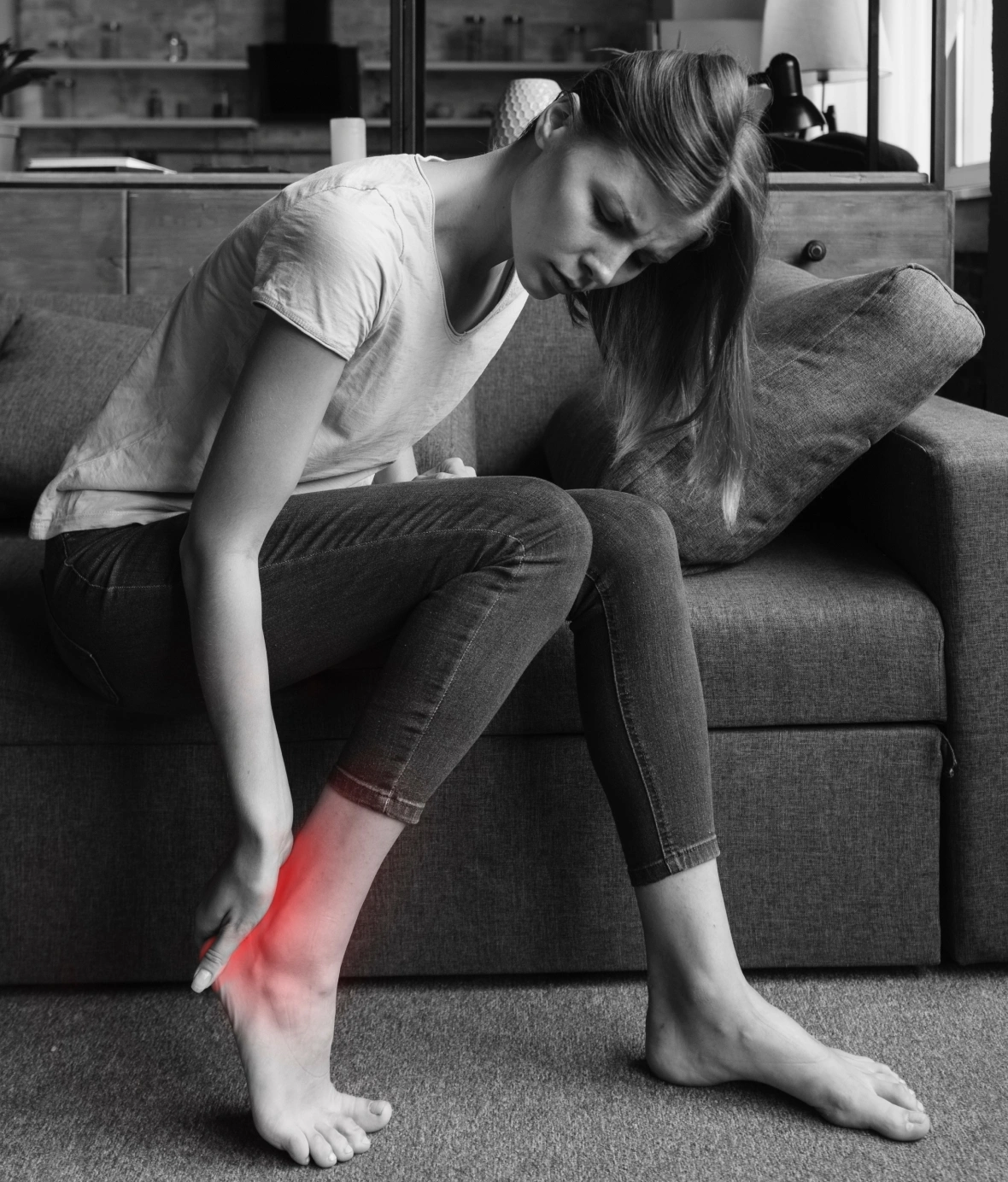Best Heel Pain Treatment in Gurugram

Heel pain can make walking, standing, or even daily activities uncomfortable and frustrating. Whether caused by plantar fasciitis, Achilles tendinitis, heel spurs, nerve compression, or foot misalignment, untreated heel pain can worsen over time, leading to chronic discomfort and mobility issues. At Painflame, we provide specialized heel pain treatment in Gurugram, using chiropractic care, physiotherapy, manual therapy, and rehabilitation exercises to relieve pain and restore foot function naturally.
Our treatment focuses on reducing inflammation, improving foot biomechanics, and strengthening supporting muscles to alleviate heel discomfort and prevent recurrence. We provide care for plantar fasciitis, Achilles tendon injuries, heel spurs, nerve pain, and postural imbalances using advanced, evidence-based techniques. Instead of relying on painkillers that only provide temporary relief, our drug-free therapies promote natural healing and long-term pain relief.
If you’re struggling with persistent heel pain, stiffness, or difficulty walking, visit our heel pain specialists in Gurugram for a personalized treatment plan. Take the first step toward pain-free movement today!
What Causes Heel Pain?
Plantar Fasciitis & Heel Spurs
Plantar fasciitis occurs when the plantar fascia, a thick band of tissue supporting the foot arch, becomes inflamed due to excessive strain. Heel spurs—bony growths on the heel bone—often develop as a response, causing sharp pain, especially in the morning or after prolonged standing.
Achilles Tendinitis & Heel Bursitis
Achilles tendinitis is caused by inflammation in the Achilles tendon, leading to stiffness, swelling, and pain near the heel. Heel bursitis occurs when the bursa (fluid-filled sac) becomes irritated, resulting in tenderness and difficulty walking.
Flat Feet & Foot Misalignment
Flat feet or improper foot biomechanics can place excess strain on the heel and arch, causing persistent pain and discomfort. Misalignment of the foot structure can also contribute to chronic heel stress and inflammation.
Nerve Compression & Tarsal Tunnel Syndrome
Conditions like tarsal tunnel syndrome (nerve compression in the foot) can cause burning, tingling, or radiating pain from the heel to the toes. Nerve-related heel pain often worsens with movement and requires specialized treatment.
Signs You Need Heel Pain Treatment
Persistent Heel Pain
If heel pain lasts more than two weeks and worsens with standing or walking, it may indicate an underlying condition such as plantar fasciitis, heel spurs, or tendon inflammation.
Stiffness & Difficulty Walking
Morning stiffness, pain after rest, or difficulty placing weight on your foot can signal plantar fasciitis, Achilles tendinitis, or joint stiffness that requires early intervention.
Sharp or Burning Pain
Sharp pain under the heel, burning sensations, or discomfort radiating into the arch or ankle may indicate nerve compression, foot misalignment, or inflammation requiring professional assessment.
Swelling or Tenderness
If your heel feels swollen, red, or tender to the touch, it may be due to bursitis, tendon irritation, or excessive pressure on the heel bone. Ignoring these signs can worsen the condition over time.


Non-Surgical Solutions for Heel Pain Relief
Physiotherapy & Foot Strengthening
Physiotherapy reduces inflammation, improves foot biomechanics, and strengthens muscles through targeted exercises. It effectively treats plantar fasciitis, Achilles tendinitis, and flat feet by enhancing stability, flexibility, and mobility, preventing future injuries and promoting long-term foot health.
Chiropractic Care & Foot Alignment
Chiropractic adjustments restore foot and ankle alignment, reducing excess pressure on the heel and improving weight distribution. By correcting postural imbalances and biomechanical issues, this approach relieves pain from plantar fasciitis, Achilles tendinitis, and gait abnormalities, promoting proper movement patterns and long-term relief.
Manual Therapy & Myofascial Release
Deep tissue massage, trigger point therapy, and myofascial release target muscle tightness, improve circulation, and reduce inflammation. These hands-on techniques relieve chronic heel pain, enhance flexibility, break down adhesions, and accelerate tissue healing, making them effective for plantar fasciitis, bursitis, and overuse injuries.
Strengthening & Preventing Future Heel Pain
Keeping your feet strong and properly aligned is essential for preventing recurring heel pain, stiffness, and foot fatigue. Weak foot muscles, poor posture, and improper movement patterns place excessive stress on the heel, leading to chronic issues. Strengthening exercises, mobility training, and gait correction can prevent future heel problems.
Strengthening Foot Muscles
Building strong foot arches, calf muscles, and ankle stability improves support and prevents strain. Exercises like toe curls, resistance band stretches, and calf raises help strengthen the foot and heel structures.
Enhancing Heel Flexibility
Tight calf muscles and restricted ankle movement can worsen heel pain. Stretching exercises, yoga, and mobility drills enhance foot flexibility, reducing stiffness and preventing inflammation.
Correcting Foot Posture & Gait
Poor posture and improper walking mechanics increase stress on the heel and arch. Postural training, gait correction, and ergonomic footwear adjustments help maintain proper alignment and balance.

Frequently Asked Questions
What are the common causes of heel pain?
Heel pain is often caused by plantar fasciitis, heel spurs, Achilles tendinitis, bursitis, nerve compression, or improper foot alignment. Repetitive stress, poor footwear, and muscle imbalances can also contribute.
When should I see a specialist for heel pain?
If your heel pain lasts more than two weeks, worsens with walking, or causes stiffness and swelling, you should see a heel pain specialist in Gurugram for assessment and treatment.
What are the best non-surgical treatments for heel pain?
Physiotherapy, chiropractic adjustments, manual therapy, foot strengthening, and postural correction are effective, drug-free solutions for heel pain relief and long-term foot health.
Can heel pain be treated without medication?
Yes, targeted exercises, joint mobilization, soft tissue therapy, and foot alignment correction can effectively reduce pain and inflammation without the need for medication.
How can I prevent heel pain from returning?
To prevent heel pain, maintain strong foot muscles, wear supportive footwear, improve flexibility, correct posture, and avoid prolonged standing or high-impact activities without proper conditioning.

